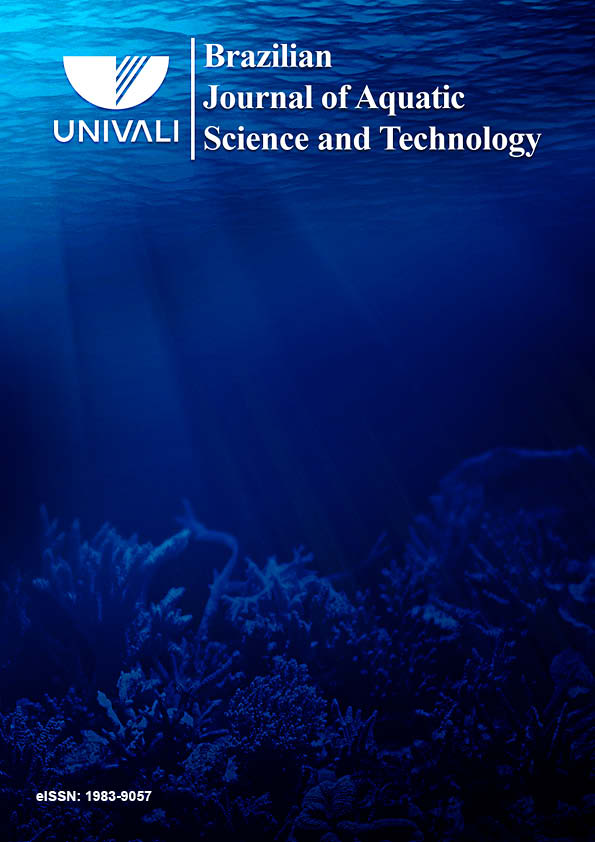Experimental use of water hyacinth (Eichhornia crassipes) wetland for treating flowing waters in an urban park in Brazil
DOI:
https://doi.org/10.14210/bjast.v20n2.7259Abstract
This study tested water treatment wetlands in an urban park located in São Paulo, Brazil. Eichhornia crassipes (water hyacinth) was introduced into two creeks inside the park, to assess the efficacy of wetlands in treating flowing waters. The plant adaptation to local conditions was very good. Higher removals were obtained in Total Suspended Solids, Turbidity and Color (maximum removal > 70%); TKN, Total Phosphorus and Fecal Coliforms had satisfactory removals (maximum removal > 50%). BOD presented low removals and Dissolved Oxygen was consumed, indicating that aerobic processes occurred. Despite the experiment’s difficulties and results’ variance, the study shows that water hyacinth has potential to treat flowing water, especially when there’s an urgent need for meeting sanitary and aesthetical standards in urban parks.
Downloads
Published
Issue
Section
License
Authors who publish with this journal agree to the following terms:
1. Authors retain copyright and grant the journal right of first publication with the work simultaneously licensed under a Creative Commons Attribution License that allows others to share the work with an acknowledgement of the work's authorship and initial publication in this journal.
2. Authors are able to enter into separate, additional contractual arrangements for the non-exclusive distribution of the journal's published version of the work (e.g., post it to an institutional repository or publish it in a book), with an acknowledgement of its initial publication in this journal.
3. Authors are permitted and encouraged to post their work online (e.g., in institutional repositories or on their website) prior to and during the submission process, as it can lead to productive exchanges, as well as earlier and greater citation of published work (See The Effect of Open Access).

